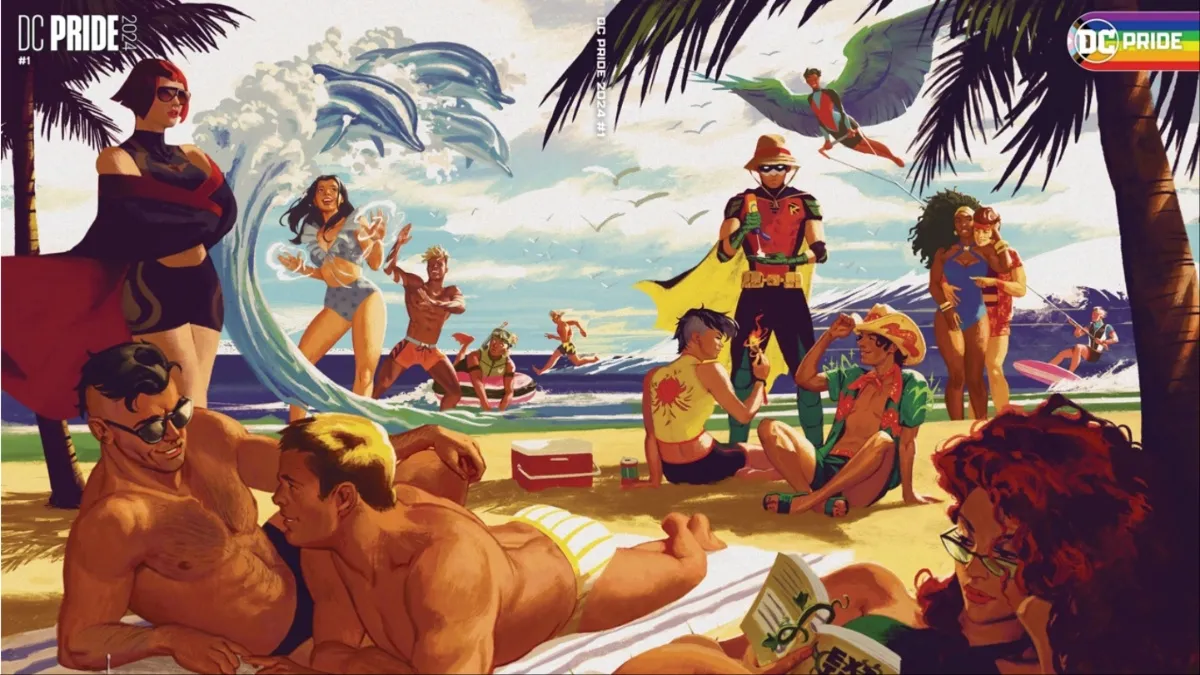In the first twelve pages of The Sandman: Overture #1, we are told the beginning of four different stories. Of course, they are all actually parts of the same story, a structure that Sandman readers will be very familiar with. I often wonder about reviews of first issues, since you are, by definition, not reviewing an entire story, just part of one. (This intuition of mine of course opens up all kinds of questions about serial storytelling and criticism of it, and those will have to wait for a different post.) That wondering does not pertain to The Sandman: Overture #1. I don’t need to know whether the story will improve in later issues: Neil Gaiman and J.H. Williams III have already produced a single issue so engrossing, inventive, and beautiful that I’d almost be perfectly happy to have the story end here. Of course, if it did, I’d never find out how it ends.
That’s a thesis statement, not a review, so lets actually get down to business. Spoilers will be kept to a minimum, for folks who’ve read Sandman or not.
Of course, folks who have read Sandman already have some idea of how they think this story will end. It is, after all, a prequel to the 1989-1996 series. But I’d put my money on Gaiman surprising us to at least some degree in the end, especially given this first installment of Overture.
For folks who keep The Sandman, its characters, and its diverse and wide-ranging settings, near to their hearts, Overture #1 immediately feels like an extension of the series, not an imitation, an afterthought, or a pale shadow. It’s been close to twenty years since the last issue of Sandman was published, but Gaiman has not lost the narrative voice or dedication to defying genre that made the book what it was. For those who haven’t read the series, the first twelve pages give a crash course in everything Sandman can be: hard science fiction, darkly humorous fantasy, historical drama, and the issue even introduces some of its most memorable characters.
If you are new to Sandman you’re probably wondering whether anything in the books will be spoiled for you by reading Overture, even with its status as a prequel. Obviously, I can’t speak for the rest of the issues in the series, but I think you’ll be safe with #1. Will you meet some characters earlier than you would otherwise? Yes. Will you find out some things about them earlier than you might otherwise? Yes. But I don’t think the information here will deprive you of any moments of suspense or delayed gratification in The Sandman, and if it does, it has replaced those moments with equivalent ones. For Sandman readers: I think the realization that the Corinthian has TEETH FOR EYES is probably horrifying whether you figure it out here or in “A Doll’s House/Collectors.”
A review of Overture should not fail to include comments on J.H. Williams’ art. The editor in me doesn’t want to say something like “Williams was born to illustrate Sandman” but the reader in me sure does. I mean, anyone familiar both with him and with Sandman gasp out loud when we heard he’d been put on the project. We knew this was coming. Williams deftly manages the issue’s shifts between settings, which in a Sandman story doesn’t just mean interiors and exteriors, but also being able to draw a character transitioning from the Waking World into Dreaming even when that dream is near identical to reality. If there’s a complaint I ever have about Williams it can be that his page layouts sometimes sacrifice readability for overall aesthetic value, but I never found myself confused about where to put my eyes in Overture #1, and there was a particularly effective page spread that I got half way through before I realized, unsettlingly, that it was teeth. And then there’s the last few pages of the issue, about which I will say nothing more.
To conclude, if there’s one thing I’m most excited for in the continuation of Overture, its that even though this appears to be a series for folks who haven’t read Sandman as well as those who have, it appears that Gaiman will be tackling some of the greatest unanswered questions of the Sandman universe (and yes, though the series has always technically been a part of the DC universe, it really does have its own rules). Those hints, laid casually throughout the series, that there are things, dark and hidden and incomprehensible things, that are greater, bigger, and above the Endless, above the personifications of Death and Destiny and Destruction themselves. Who made the rules that Endless may not love mortals? Who tells the great siblings how to bury one of their own in “The Wake?” I daresay it would be enough, for an audience who at this point is comprised to a significant extent of people who grew up reading the near twenty-year-old series, for the series to simply be an extension on The Sandman, an extra story, a bit more of the old. But to see it show promise of expanding upon what we think we know about the Endless, their “lives” and their universe, and especially what we know about the nature of Dream himself, is tremendously exciting.
- 11 Sandman Stories You Can Read if You Haven’t Read Sandman
- The Sandman: Overture Variant Cover
- Dave McKean’s Overture Cover
Are you following The Mary Sue on Twitter, Facebook, Tumblr, Pinterest, & Google +?









Published: Oct 31, 2013 11:49 am